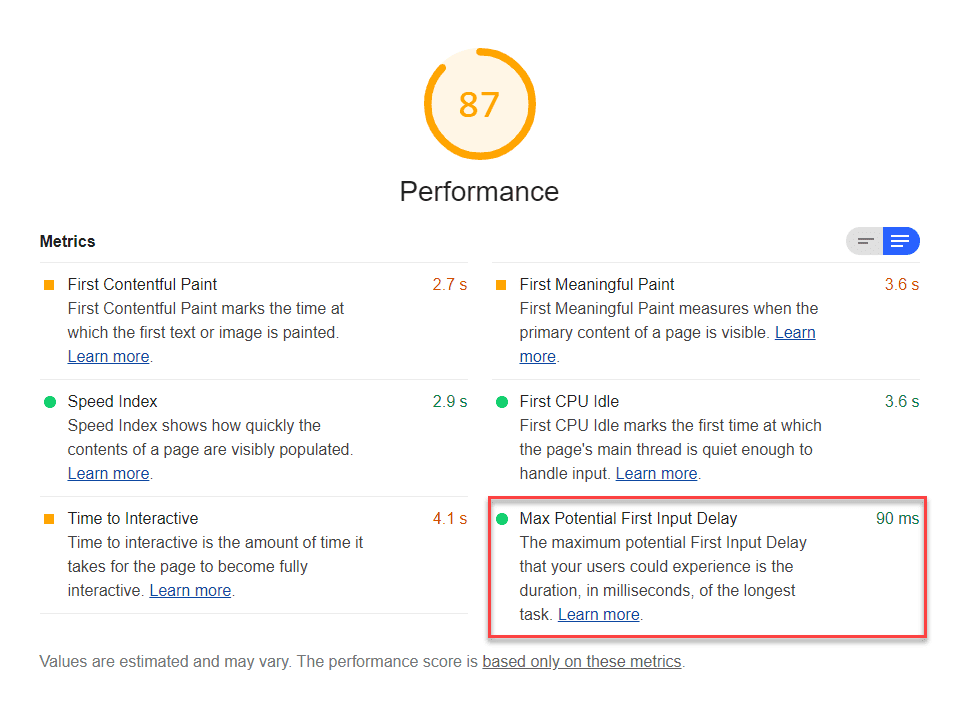Max Potential First Input Delay (FID) is one of the metrics tracked in the Performance section of the Lighthouse report. Each metric captures some aspect of page load speed.
Lighthouse displays Max Potential FID in milliseconds:

What Max Potential FID measures
Max Potential FID measures the worst-case First Input Delay that your users might experience. First Input Delay measures the time from when a user first interacts with your site, such as clicking a button, to the time when the browser is actually able to respond to that interaction.
Lighthouse calculates Max Potential FID by finding the duration of the longest task after First Contentful Paint. Tasks before First Contentful Paint are excluded because it's unlikely that a user will attempt to interact with your page before any content has been rendered to the screen, which is what First Contentful Paint measures.
How Lighthouse determines your Max Potential FID score
Your Max Potential FID score is a comparison of your page's Max Potential FID time and Max Potential FID times for real websites, based on data from the HTTP Archive. For example, if your Max Potential FID score in Lighthouse is green, it means that your page performs better than 90% of real websites.
This table shows how to interpret your Max Potential FID score:
| Max Potential FID time (in milliseconds) |
Color-coding |
|---|---|
| 0–130 | Green (fast) |
| 130-250 | Orange (moderate) |
| Over 250 | Red (slow) |
How to improve your Max Potential FID score
If you're trying to make major improvements to your Max Potential FID score, see How to improve your TTI score. The strategies for majorly improving Max Potential FID are largely the same as the strategies for improving TTI.
If you want to optimize your Max Potential FID score specifically, you need to reduce the duration of your longest tasks, since that is what Max Potential FID technically measures. The Idle Until Urgent strategy is one way to do that.
How to capture FID field data
Lighthouse's measurement of Max Potential FID is lab data. To capture real FID data as your users load your pages, use Google's First Input Delay library. Once you're capturing FID data, you can report it as an event to your preferred analytics tool.
Since FID measures when actual users first interact with your page, it's more inherently variable than typical performance metrics. See Analyzing and reporting on FID data for guidance about how to evaluate the FID data you collect.
How to improve your overall Performance score
Unless you have a specific reason for focusing on a particular metric, it's usually better to focus on improving your overall Performance score.
Use the Diagnostics section of your Lighthouse report to determine which improvements will have the most value for your page. The more significant the opportunity, the greater the effect it will have on your Performance score. For example, the following Lighthouse screenshot shows that eliminating render-blocking resources will yield the biggest improvement:

See the Performance audits to learn how to address the opportunities identified in your Lighthouse report.
